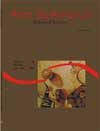<em>Pseudocrepidobothrium eirasi</em> (Rego and de Chambrier, 1995) gen. n. and comb. nov. (Cestoda, Proteocephalidea), parasite of a South American freshwater fish, and comparative cladistic analysis with <em>Crepidobothrium</em> spp.
Abstract
The morphology of Crepidobothrium eirasi Rego and de Chambrier, 1995 was revised and a cladistic analysis was performed on the six known species of Crepidobothrium Monticelli, 1900, namely, C. eirasi, C. Gerrardi (Baird, 1860), C. Viperis (Beddard, 1913), C. Dollfusi Freze, 1965, C. Garzoni de Chambrier, 1988 and C. Lachesidis (MacCallum, 1921), using 23 characters and one outgroup. This analysis yielded two parsimonious trees with 0.76 consistency index. Both trees concur in the position of C. Eirasi, and suggest that Crepidobothrium is monophyletic only when C. eirasi is excluded from the genus. The new genus Pseudocrepidobothrium has been built to allocate C. Eirasi, so that the monophyly of Crepidobothrium may be maintained. Pseudocrepidobothrium eirasi n. comb. is the only species from a fish with notched suckers, while all Crepidobothrium spp. are parasites of South American reptilesDownloads
Download data is not yet available.
Published
2008-05-09
How to Cite
Rego, A. A., & Ivanov, V. (2008). <em>Pseudocrepidobothrium eirasi</em> (Rego and de Chambrier, 1995) gen. n. and comb. nov. (Cestoda, Proteocephalidea), parasite of a South American freshwater fish, and comparative cladistic analysis with <em>Crepidobothrium</em> spp. Acta Scientiarum. Biological Sciences, 23, 363-367. https://doi.org/10.4025/actascibiolsci.v23i0.2690
Issue
Section
Biology Sciences
DECLARATION OF ORIGINALITY AND COPYRIGHTS
I Declare that current article is original and has not been submitted for publication, in part or in whole, to any other national or international journal.
The copyrights belong exclusively to the authors. Published content is licensed under Creative Commons Attribution 4.0 (CC BY 4.0) guidelines, which allows sharing (copy and distribution of the material in any medium or format) and adaptation (remix, transform, and build upon the material) for any purpose, even commercially, under the terms of attribution.
Read this link for further information on how to use CC BY 4.0 properly.
0.6
2019CiteScore
31st percentile
Powered by 

0.6
2019CiteScore
31st percentile
Powered by 











1.png)




3.png)













